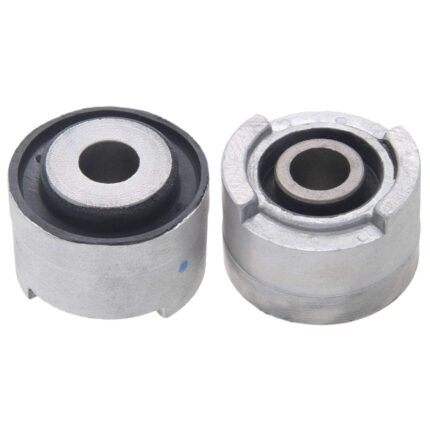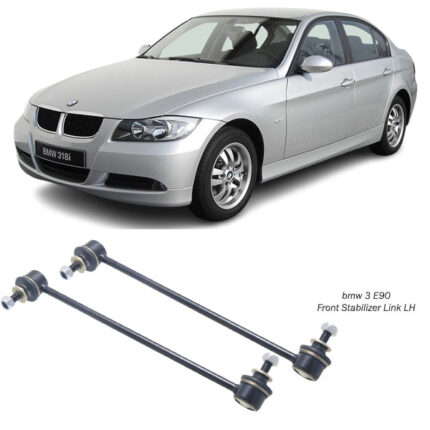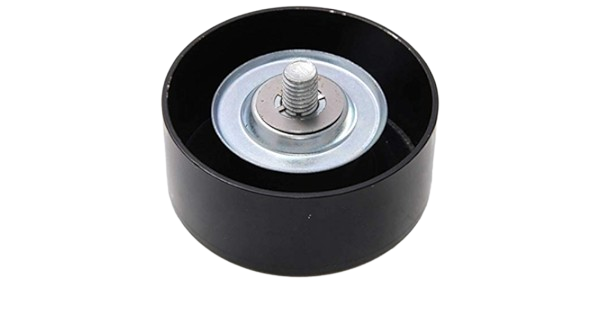-11%
Get Nissan VQ35DE Idler Pulley
The idler pulley is a fundamental component of a vehicle’s engine accessory drive system, often overlooked but critical for maintaining proper belt tension and ensuring efficient operation of various engine-driven components. Here, we explore in detail the functions, components, types, importance, signs of issues, replacement considerations, and maintenance tips related to idler pulleys.
Functions and Components of Idler Pulley
- Belt Tensioning: The primary function of the idler pulley is to maintain proper tension on the engine belts. It achieves this by exerting pressure on the belt to prevent slippage, ensuring that power is efficiently transferred from the crankshaft to other engine accessories such as the alternator, air conditioning compressor, power steering pump, and water pump.
- Support for Belt Routing: Idler pulleys also play a crucial role in guiding and supporting the routing of the engine belts. They are strategically positioned to route the belt around various engine components, ensuring smooth operation and preventing interference with other engine parts.
- Reduction of Belt Vibration: By providing a stable and smooth surface for the belt to run on, idler pulleys help reduce vibrations and noise generated by the rotating belt. This contributes to a quieter operation of the engine and enhances overall driving comfort.
- Heat Dissipation: Idler pulleys are typically equipped with bearings that allow for smooth rotation. These bearings also help dissipate heat generated during operation, ensuring prolonged durability and reliability of the pulley assembly.
Types of Idler Pulleys
- Smooth vs. Grooved Pulleys:
- Smooth Pulleys: These idler pulleys have a flat surface and are used with V-belts or serpentine belts that do not require grooves for proper belt engagement.
- Grooved Pulleys: Designed with grooves on the pulley surface, these are used with ribbed or multi-ribbed belts (serpentine belts) to prevent belt slippage and ensure optimal contact and grip.
- Fixed vs. Tensioner Integrated Pulleys:
- Fixed Pulleys: Fixed idler pulleys are stationary and maintain consistent tension on the belt throughout their lifespan.
- Tensioner Integrated Pulleys: Some vehicles use idler pulleys integrated into belt tensioner assemblies, which automatically adjust belt tension to compensate for belt wear and stretch.
Importance of Idler Pulley
Idler pulleys are crucial for several reasons:
- Drive System Efficiency: By maintaining proper belt tension, idler pulleys ensure efficient power transmission from the engine to accessory components, optimizing their performance and longevity.
- Prevention of Belt Wear: Properly tensioned belts reduce wear and tear, extending the lifespan of engine belts and minimizing the risk of belt failure, which could lead to loss of function in critical engine-driven systems.
- Reduced Maintenance Costs: Regular maintenance of idler pulleys helps prevent premature belt replacements and costly repairs associated with damaged engine accessories.
Signs of Issues with Idler Pulley
- Squealing or Squeaking Noises: Worn-out or failing idler pulley bearings can produce squealing or squeaking noises, especially during engine startup or acceleration, indicating insufficient belt tension or impending bearing failure.
- Visible Wear or Damage: Inspect the idler pulley for signs of wear, such as cracks, grooves, or corrosion on the pulley surface, which can affect belt engagement and lead to belt slippage.
- Belt Misalignment or Fraying: Misaligned idler pulleys can cause the belt to run off-center or rub against adjacent engine components, leading to belt fraying, excessive wear, and potential belt failure.
- Excessive Belt Slack: If the idler pulley fails to maintain proper tension, the belt may exhibit excessive slack or looseness, resulting in reduced performance of engine-driven accessories.
Replacement Considerations
- Timing of Replacement: Replace idler pulleys at recommended intervals or when signs of wear or noise are observed. Regular inspection during routine maintenance can help identify issues early and prevent belt-related failures.
- Quality Parts: Use high-quality OEM or aftermarket idler pulleys from reputable manufacturers to ensure proper fitment, durability, and performance. Consider replacing the entire pulley assembly, including bearings and mounting hardware, for comprehensive restoration of belt tension and reliability.
- Professional Installation: For complex repairs or if you’re unsure about the process, seek assistance from a qualified mechanic or automotive technician experienced in engine accessory drive systems. Proper installation ensures correct belt tension and alignment, optimizing the performance and longevity of the idler pulley assembly.
- Belt Inspection and Adjustment: After replacing idler pulleys, inspect the entire belt drive system, including tensioners and other pulleys, and adjust belt tension as per manufacturer specifications. Proper alignment and tensioning help prevent premature wear and ensure reliable operation.
Maintenance Tips
- Regular Inspection: Include idler pulleys in routine engine inspections, checking for signs of wear, noise, or visible damage. Address any issues promptly to prevent further damage to the belt drive system.
- Lubrication and Cleaning: Maintain idler pulley bearings by lubricating them with high-temperature grease or as recommended by the manufacturer. This helps reduce friction and heat buildup, prolonging bearing life and ensuring smooth pulley operation.
- Environmental Protection: Protect idler pulleys from exposure to contaminants such as dirt, debris, and moisture, which can accelerate wear and corrosion. Clean the pulley and surrounding area regularly to maintain optimal performance.
Follow us on Facebook for more parts.



